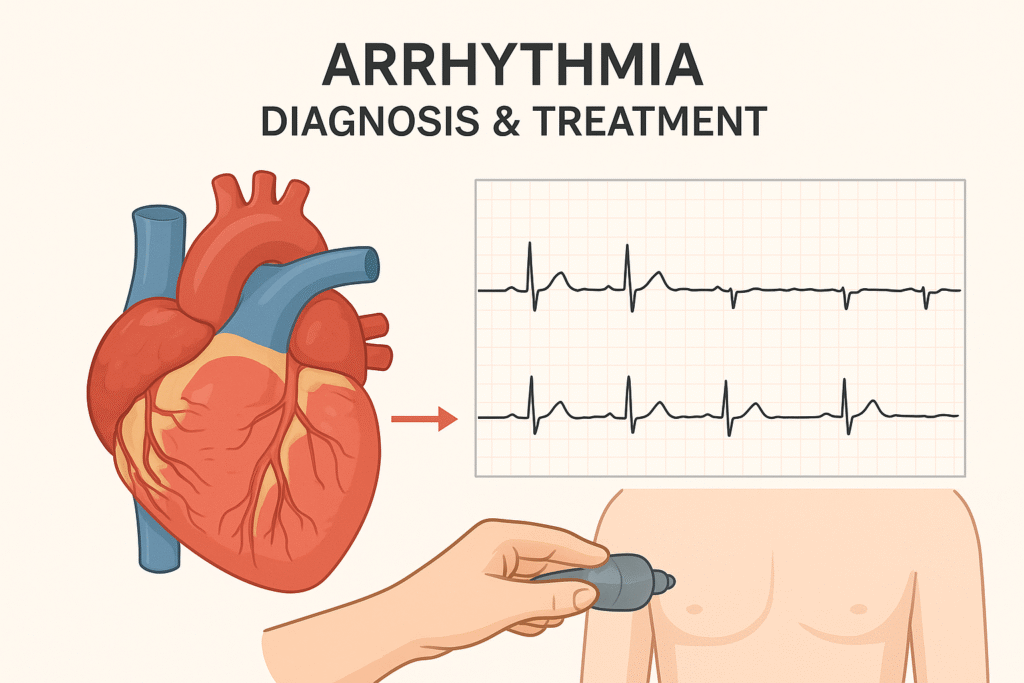Arrhythmia Diagnosis & Treatment
Arrhythmia refers to an irregular heartbeat — it may be too fast, too slow, or erratic. These rhythm disturbances occur when the electrical signals that coordinate the heartbeat don’t function properly. Early diagnosis and treatment are crucial to prevent complications such as fainting, stroke, or heart failure.
Common Symptoms
1. Fluttering or pounding sensation in the chest
2. Rapid or slow heartbeat
3. Dizziness, lightheadedness, or fainting spells
4. Shortness of breath and fatigue
5. Chest discomfort or pressure
Diagnosis
. Electrocardiogram (ECG/EKG): Measures the heart’s electrical activity.
. Holter Monitor: Records continuous heart activity for 24–48 hours.
. Event Recorder or Loop Recorder: Used for intermittent symptoms.
. Exercise Stress Test: Assesses rhythm changes during physical activity.
. Electrophysiology (EP) Study: Evaluates the heart’s electrical system in detail.
. Echocardiogram & Blood Tests: Check for structural or metabolic causes such as thyroid or electrolyte imbalances.
Treatment Options
1. Medications
Antiarrhythmic drugs to control heart rate or rhythm
Blood thinners (anticoagulants) to reduce the risk of stroke in conditions like Atrial Fibrillation (AFib)
Beta-blockers and calcium channel blockers to manage heart rate
2. Lifestyle Modifications
Maintain a healthy weight
Avoid smoking, alcohol, and excessive caffeine
Manage blood pressure, cholesterol, and diabetes
Practice stress management and regular exercise
3. Procedures and Devices
Pacemaker: Helps regulate slow heartbeats.
Cardioversion: Restores normal rhythm using mild electrical shocks or medications.
Catheter Ablation: Destroys small areas of heart tissue causing abnormal signals.
Implantable Cardioverter-Defibrillator (ICD): Prevents sudden cardiac arrest in high-risk patients.

